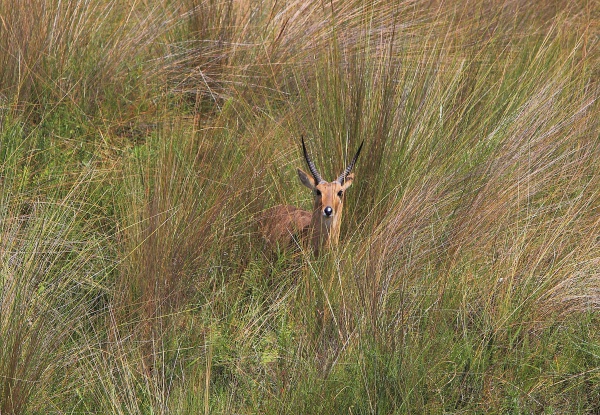Facts About Southern reedbuck
The southern reedbuck, also known as the rietbok or common reedbuck, is a diurnal antelope native to southern Africa. First described in 1785 by Dutch physician and naturalist Pieter Boddaert, it belongs to the genus Redunca in the family Bovidae. Typically weighing around 58 kg and measuring between 134 to 167 cm in length, the southern reedbuck is the largest of the Redunca species, standing approximately 80-90 cm tall at the shoulder. Males generally weigh about 68 kg, while females are lighter, around 48 kg.
Identifying a southern reedbuck can be done by noting its size and distinctive features. They have dark lines on their forelegs and whitish rings around their eyes, and their silky coats range from light brown to greyish-brown. Males possess characteristic forward-curving horns, which females lack.
Southern reedbucks are usually solitary or found in pairs, but they sometimes form small groups of up to 20 individuals. Most active at dawn and dusk, they spend daytime resting in tall grass or reed beds. These antelopes are territorial, with each territory covering between 35 to 60 hectares. Their primary predators include lions, leopards, cheetahs, hyenas, and crocodiles. They primarily feed on grasses, herbs, and reeds and require water every few days.
Breeding occurs throughout the year, although most matings take place during the hot and wet season. Females reach reproductive maturity at two years, while males mature slightly later. After a gestation period of seven to eight months, a single calf is born. Southern reedbucks inhabit various southern African countries, preferring moist grasslands with ample tall grass and nearby water sources.
Conservation is crucial for the southern reedbuck, as habitat destruction and overexploitation have led to population declines in certain areas. They are rare in South Africa and on the verge of extinction in regions like Gabon and the Democratic Republic of the Congo. Hunting for meat and trophies also poses a significant threat, with approximately 60% of the population residing in protected areas. Safeguarding their habitats and mitigating further population decline are essential to ensure their continued survival.

 Namibia
Namibia